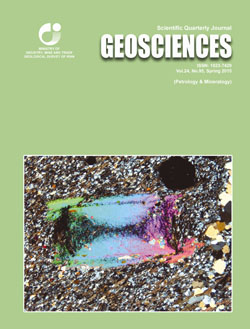Document Type : Original Research Paper
Authors
1 Assistant Professor, Department of Earth Sciences, Faculty of Sciences, University of Kurdistan, Sanandaj, Iran
2 Professor, Department of Geology, College of Science, University of Tehran,Tehran, Iran
3 Assistant Professor, Department of Geology, Payame Noor University, Iran
Abstract
The Kuh-e Dom intrusion with calc-alkaline nature, in the northeast of Ardestan is located in the central part of the Urumieh-Dokhtar Magmatic Arc and includes the felsic and intermediate-mafic units. The felsic unit consists of monzogranite, granodiorite, quartz monzonite and quartz monzodiorite, whereas the intermediate-basic rocks comprise gabbro, diorite, quartz diorite, monzodiorite and monzonite. The acidic dykes intruded this intrusion and its surrounding rocks. The various mafic microgranular enclaves of dioritic, quartz dioritic, monzodioritic and quartz monzodioritic composition exposed in the acidic rocks. The zircon U-Pb dating by the LA-ICP-MS method indicates that the ages of the felsic rocks, intermediate-mafic rocks, acidic dikes and enclaves are 51.1±0.4 Ma, 53.9±0.4 Ma, 49.95±0.64 Ma and 50.3±0.8 Ma respectively. These ages are in good agreement with the lower-middle Eocene age of the intrusive body, which is simultaneous with subduction of the Neotethys oceanic crust underneath the Central Iran. This result is in agreement with the previous geochemical result.
Keywords

